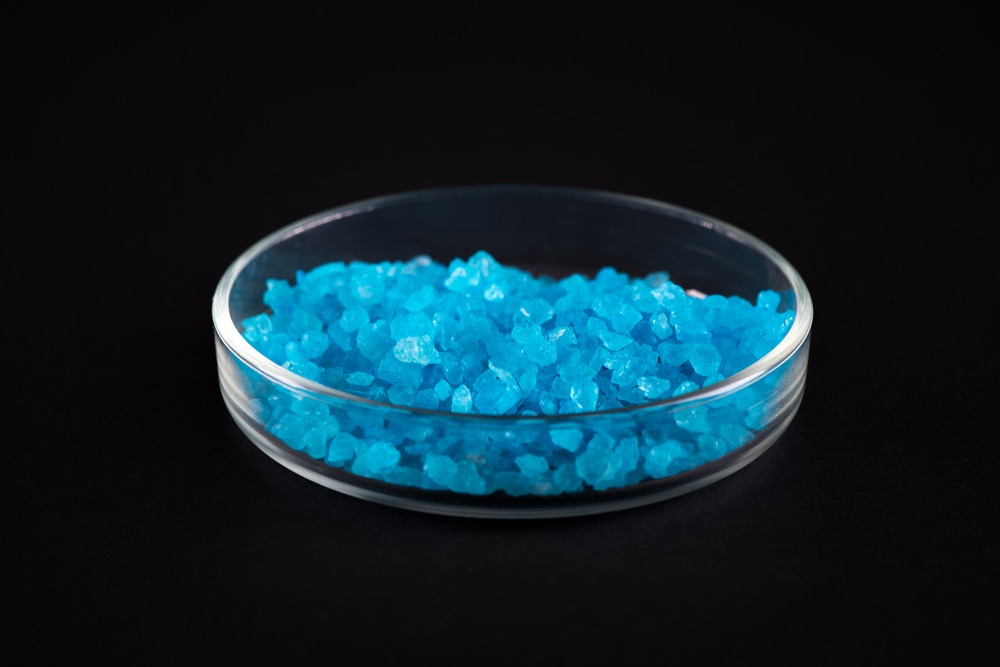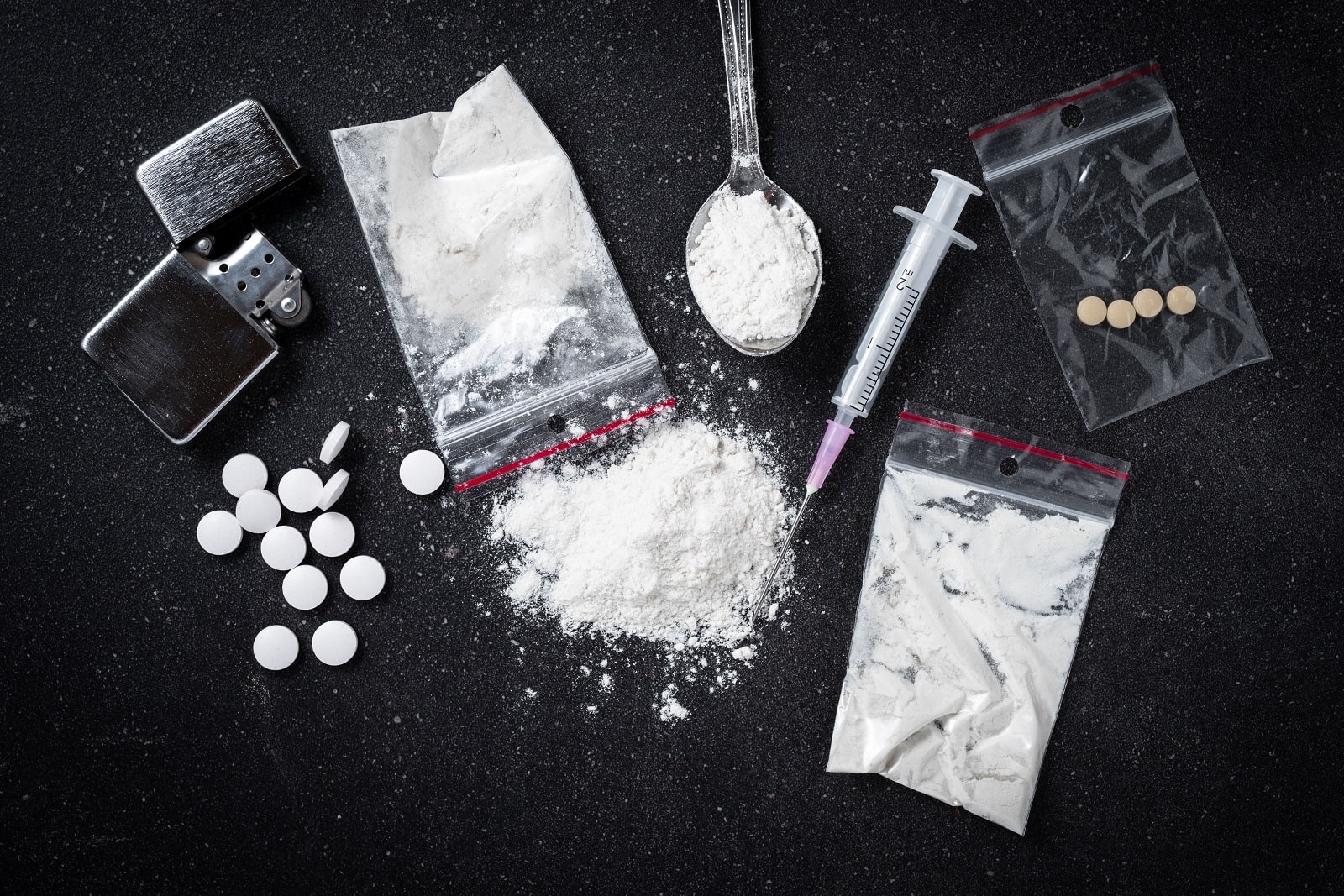Addiction | 4 min read
What Does Crystal Meth Look Like?
Medically Reviewed By

On September 14, 2024
Written By
On February 13, 2023

What you will learn
- Crystal meth is a purified rock crystal form of methamphetamine, a central nervous system stimulant.
- Crystal meth is a translucent or white, glass-like rock that’s smoked, snorted, swallowed, or dissolved and injected.
- Though both meth and crystal meth are addictive, crystal meth may be more dangerous because it’s pure and causes an intense high.
- Crystal meth addiction can be difficult to overcome, but addiction treatment can help.
Crystal meth is the rock crystal form of methamphetamine, a highly addictive central nervous system stimulant. Because crystal meth is a purified form of meth that’s often smoked, it can cause an intense and rapid euphoria that encourages repeated use, leading to a cycle of addiction.
Learn more about crystal meth, how it’s different from meth, what it looks like, its effects, and how to get help for meth addiction.
What Is Crystal Meth?
Crystal meth is the common name for crystal methamphetamine, a strong and highly addictive form of methamphetamine. There is no legal version of crystal meth. Also known as “ice” or “glass,” crystal meth is a popular party drug that’s smoked with a small glass pipe, swallowed, snorted, or dissolved and injected into a vein.
What Does Crystal Meth Look Like?
Crystal meth looks like clear, glass-like rocks. It’s often translucent, but it can have a faint white appearance. These rocks are a purer form of methamphetamine than the powder, leading to more intense and rapid euphoria that fades quickly.[1] People tend to binge on crystal meth to maintain the high.
What Does Crystal Meth Smell Like?
In its raw form, crystal meth doesn’t have a distinctive smell. Once it’s smoked, crystal meth can have a sweet, faintly chemical smell that’s recognizable once you’re familiar with it.
What Does a Person on Meth Look Like?
Meth, in both crystal and powder forms, takes a tremendous toll on the body and brain. Chronic use leads to clear physical signs, including:[2]
- Noticeable and sudden weight loss
- Dilated pupils
- Skin sores
- Burns on the lips or fingers
- Rotting teeth, also known as “meth mouth”
Another clear sign of meth use is “tweaking,” a period of anxiety and insomnia that causes someone on meth to appear irritable, paranoid, confused, and prone to violent behavior. This occurs at the end of a meth binge when the person can no longer achieve a rush or high.
Effects of Crystal Meth
Crystal meth can have both short- and long-term effects on the brain and body:
How Crystal Meth Effects the Brain
Crystal meth has a big impact on the body and brain. As a central nervous system stimulant, meth stimulates the release of the neurotransmitter dopamine. However, meth can be more dangerous because a larger percentage of the drug remains unchanged in the body and stays present in the brain longer.[3]
Meth is toxic to the nerve terminals in the brain and can damage the synapses where dopamine is released, affecting the mood and leading to dependence. Chronic, long-term meth use can alter brain chemistry, making it more difficult to experience pleasure outside of the pleasure that comes from the drug.
How Crystal Meth Affects the Body
The effects of meth can last anywhere from 8 to 24 hours. People on meth will usually stay awake for days if they binge the drug, experiencing effects like:[4]
- Anxiety
- Insomnia
- Flushed skin
- Chest pain
- Suppressed appetite
- Muscle twitching
- Hallucinations
- Fever
- Aggression
- Elevated body temperature
There are immediate risks to meth use, including heat stroke, heart attack, stroke, seizures, and overdose, particularly if someone takes too much of the drug.
Crystal Meth vs. Meth
Crystal meth and meth are essentially the same substance, but they differ in their forms and purity. They’re both powerful central nervous system stimulants that belong to the class of phenethylamine and amphetamine class of psychoactive drugs.
Meth can come in many forms, including powder, pill, or crystalline form. Though meth is sometimes used as a last-line treatment for attention deficit hyperactivity disorder (ADHD) and obesity, there are much safer stimulant drugs that are preferred. Most meth is produced illicitly and used recreationally to achieve euphoria and boost energy.
Crystal meth is a highly purified form of meth in a crystalline form. It resembles pieces of glass or white rocks. Crystal meth is high purity compared to other forms of meth and is often smoked in glass pipes. Its known street names include ice, glass, crank, and crystal. Though both drugs are used illicitly, crystal meth is often associated with intense effects and significant health risks.
Withdrawing from Crystal Meth
Crystal meth leads to rapid dependency with regular use because people experience a hard “crash” after they stop using the drug. While not usually life-threatening, withdrawal from meth can be debilitating and painful, often lasting several days or several weeks. In some cases, this can cause relapse to alleviate the symptoms.
The symptoms of meth withdrawal can vary but often include:[5]
- Fatigue
- Increased appetite
- Confusion
- Nausea
- Agitation
- Loss of motivation
- Stomachache
- Paranoia
- Hallucinations
- Fever
- Severe depression
- Dehydration
- Red, itchy eyes
- Suicidal thoughts
The acute withdrawal period varies between individuals, but the symptoms often peak about two or three days after stopping meth use and taper off. The psychological effects can last much longer, however, and may include mood swings, agitation, intense cravings, and sleep disturbances.
Long-Term Effects of Meth Use
Meth can have devastating effects even in the first use, but the risks compound the more you use meth. In the long term, meth can cause:[6]
- Respiratory issues
- Heart disease
- Liver failure
- Rotting teeth
- Reproductive issues
- Premature aging
- Arrhythmia
- Seizures
- Kidney failure
- High blood pressure
- Skin infections
- Malnutrition
- Sudden cardiac death
- Impaired cognition
- Memory loss
- Depression
- Loss of the ability to feel pleasure
- Psychosis
Treatment Options for Crystal Meth Addiction
Because of crystal meth’s intense withdrawal, it’s extremely difficult to overcome meth abuse or addiction on your own. Medical detox is often the first step in seeking addiction treatment to get through withdrawal and form a strong foundation. In this setting, you will receive medical care and supervision to alleviate withdrawal symptoms and keep you as safe and comfortable as possible while the drug clears your system.
Though detox is important, it’s not enough to treat addiction on its own. An addiction treatment program in an inpatient or outpatient setting can treat the emotional, social, and psychological effects of addiction. Treatment plans are tailored to your history and treatment goals, but they often include a combination of counseling and therapies, such as individual counseling and cognitive behavioral therapy.
Overcoming Meth Addiction
Crystal meth is highly addictive and produces an intense, rapid high that fades, encouraging repeated use and increases the risks of adverse health effects, long-term damage, and possible overdose. If you or a loved one is struggling with meth addiction, it’s crucial to seek treatment to get on a path to recovery and better health.
Frequently Asked Questions on Meth Identification
Meth is often produced in clandestine laboratories using inexpensive, over-the-counter ingredients found in cold medications and additives like drain cleaner, fertilizer, acetone, or paint thinner. Most of the meth in the US is produced in Mexico and smuggled into the country, where it may be converted into crystal meth in small laboratories.
Long-term use of crystal meth can lead to severe physical and mental health problems, including dental issues, skin sores, weight loss, mood disturbances, cognitive impairment, and an increased risk of infections.
Yes, crystal meth and meth are Schedule II controlled substances in the US. It’s illegal to possess, manufacture, or distribute the drugs.
Yes, treatment for crystal meth addiction can be treated effectively with detox and an addiction treatment program. While the specific therapies vary, many addiction treatment programs involve behavioral therapies like cognitive behavioral therapy, contingency management, and other therapies.
Crystal meth is a purified form of meth, typically in the form of crystals or rocks. Generally, meth is a broad category that may include the powder, pill, or crystal form, whereas crystal meth refers exclusively to the rock crystal form.
If you suspect someone is using crystal meth, it’s important to encourage them to seek treatment. Make sure to approach them with compassion and no judgment, as addiction is a complex medical condition that requires treatment and support.
Ascendant NY: You Don’t Have to Live With a Meth Addiction
You don’t have to go through this fight alone or worry about your loved ones. We are aware that individuals with substance use disorder have an impact on both themselves and their loved ones. At Ascendant, we support and tenderly direct you on your path to recovery. If you or someone you know is dealing with a meth addiction, get in touch with us right now to discuss your treatment options at our recovery center.
Ascendant New York Editorial Guidelines
Here at Ascendant New York, we understand the importance of having access to accurate medical information you can trust, especially when you or a loved one is suffering from addiction. Find out more on our policy.
[1,2] WebMD. (n.d.-b). Crystal meth: Signs of use and addiction. WebMD. Retrieved from https://www.webmd.com/mental-health/addiction/crystal-meth-what-you-should_know on 2024, July 18.
[3,4] GoodRx. (n.d.-a). How meth affects the brain, can lead to paranoia, schizophrenia. GoodRx. Retrieved from https://www.goodrx.com/methamphetamine/how-meth-affects-brain-lead-to-paranoia-schizophrenia on 2024, July 18.
[5] MediLexicon International. (n.d.). Meth withdrawal symptoms: Duration, treatment, and support. Medical News Today. Retrieved from https://www.medicalnewstoday.com/articles/meth-withdrawal-symptoms on 2024, July 18.
[6] U.S. Department of Health and Human Services. (2022, January 12). What are the long-term effects of methamphetamine misuse?. National Institutes of Health. Retrieved from https://nida.nih.gov/publications/research-reports/methamphetamine/what-are-long-term-effects-methamphetamine-misuse on 2024, July 18.





